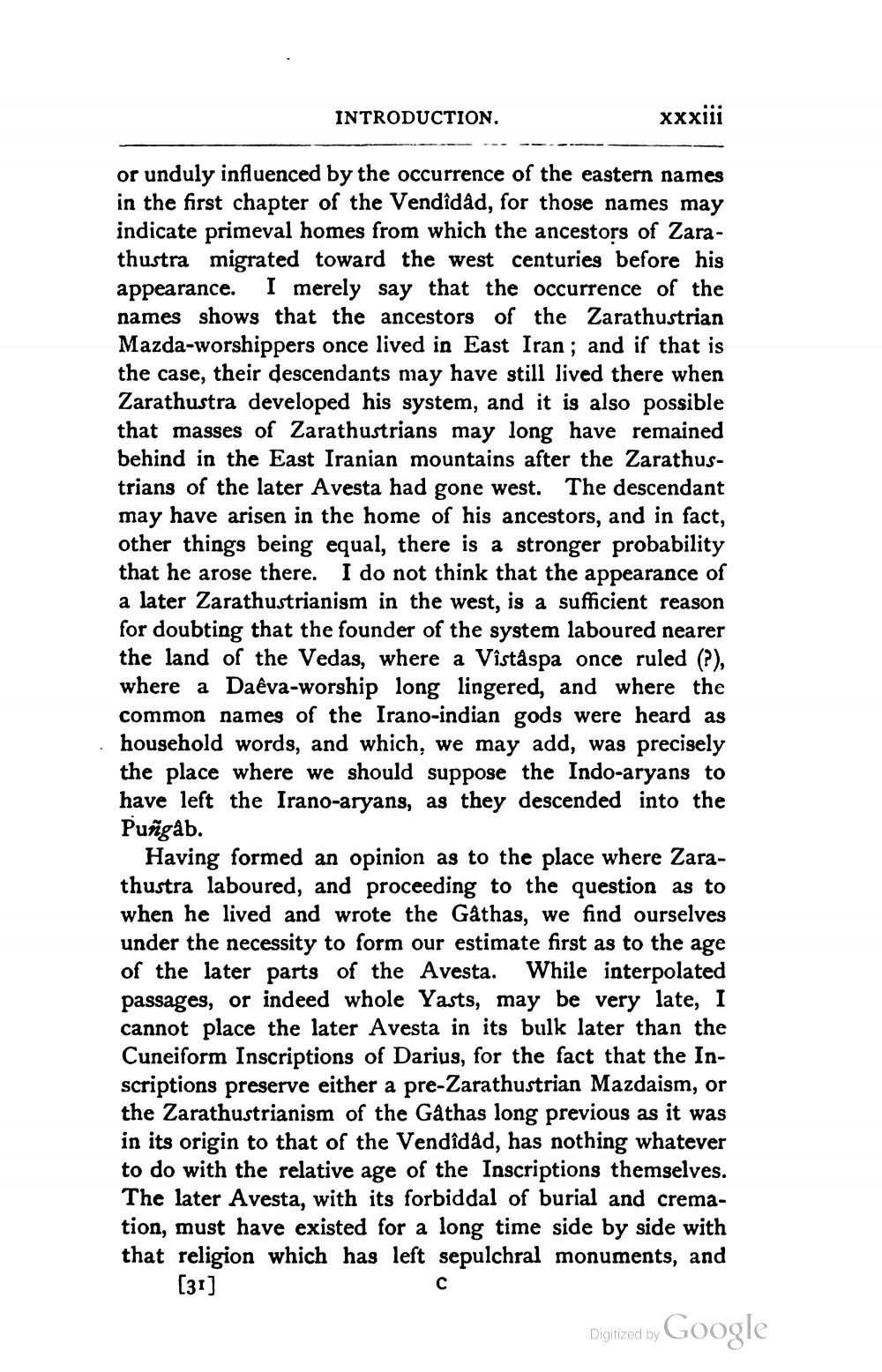________________
INTRODUCTION.
xxxiii
or unduly influenced by the occurrence of the eastern names in the first chapter of the Vendîdad, for those names may indicate primeval homes from which the ancestors of Zarathustra migrated toward the west centuries before his appearance. I merely say that the occurrence of the names shows that the ancestors of the Zarathustrian Mazda-worshippers once lived in East Iran; and if that is the case, their descendants may have still lived there when Zarathustra developed his system, and it is also possible that masses of Zarathustrians may long have remained behind in the East Iranian mountains after the Zarathustrians of the later Avesta had gone west. The descendant may have arisen in the home of his ancestors, and in fact, other things being equal, there is a stronger probability that he arose there. I do not think that the appearance of a later Zarathustrianism in the west, is a sufficient reason for doubting that the founder of the system laboured nearer the land of the Vedas, where a Viståspa once ruled (?), where a Daêva-worship long lingered, and where the common names of the Irano-indian gods were heard as household words, and which, we may add, was precisely the place where we should suppose the Indo-aryans to have left the Irano-aryans, as they descended into the Puñgab.
Having formed an opinion as to the place where Zarathustra laboured, and proceeding to the question as to when he lived and wrote the Gåthas, we find ourselves under the necessity to form our estimate first as to the age of the later parts of the Avesta. While interpolated passages, or indeed whole Yasts, may be very late, I cannot place the later Avesta in its bulk later than the Cuneiform Inscriptions of Darius, for the fact that the Inscriptions preserve either a pre-Zarathustrian Mazdaism, or the Zarathustrianism of the Gathas long previous as it was in its origin to that of the Vendîdad, has nothing whatever to do with the relative age of the Inscriptions themselves. The later Avesta, with its forbiddal of burial and cremation, must have existed for a long time side by side with that religion which has left sepulchral monuments, and [31]
Digitized by Digitized by Google




